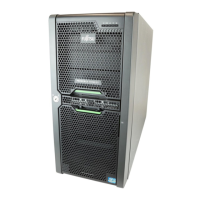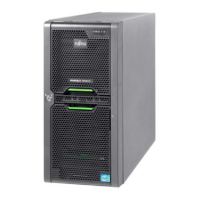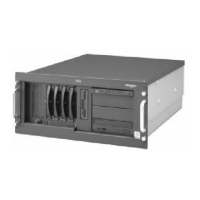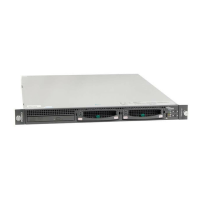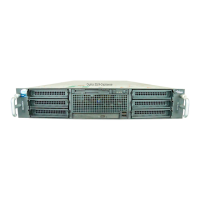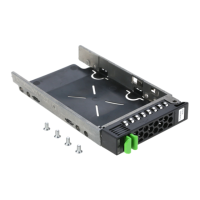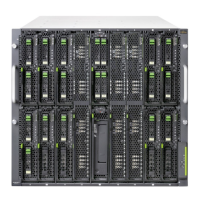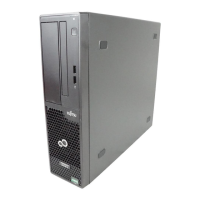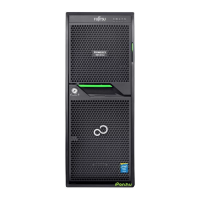
Do you have a question about the Fujitsu PRIMERGY TX140 S2 and is the answer not in the manual?
Defines the manual's scope and intended audience for server installation and operation.
Lists other relevant documents for additional information on the server and software.
Explains symbols, formatting, and cautionary notes used throughout the manual.
Details the key features of the PRIMERGY TX140 S2 server, including processors and CSS.
Describes the types of hard disk drives and drive cages supported by the server.
Explains the integrated SATA controller and its supported RAID levels.
Details the available SAS/SATA RAID controllers and their functionalities.
Describes the 5.25-inch bays and their potential uses, including DVD drives.
Covers the server's power supply options, including standard and redundant hot-plug units.
Explains features like ECC memory, ASR&R, PDA, and RAID for system reliability.
Describes the integrated remote management controller and its functions for server control.
Explains how server management is implemented using ServerView Operations Manager and PDA.
Details the utility for configuring the server and installing the operating system.
Describes the remote management solution for monitoring and maintenance.
Provides detailed technical specifications for the server, including hardware and interfaces.
Provides critical safety guidelines for handling and operating the server, including warnings and precautions.
Information regarding ENERGY STAR compliance and its implications for energy consumption.
Details the system's compliance with EC directives for electromagnetic compatibility and low voltage.
States compliance with FCC rules for Class A digital devices and potential interference.
Provides instructions and warnings for safely transporting the server.
Specific instructions and safety precautions for rack mounting the server.
Information on environmentally friendly design, energy saving, and packaging.
Step-by-step guide for safely unpacking the server and checking its contents.
Instructions for setting up the server in its floorstand configuration.
Detailed steps for installing and removing the server in a rack system.
Explains how to connect external devices using the server's ports.
Instructions for connecting the server to a power source.
General guidelines and precautions for connecting and disconnecting various cables.
Procedure for accessing drives in the floorstand model.
Overview of the server's control buttons, indicators, and their functions.
Provides instructions for powering the server on, off, and managing its state.
Guide to configuring server settings and installing the operating system.
Instructions for safely cleaning the server and its peripherals.
How to use BIOS Setup security features to protect data and the system.
Steps to diagnose and resolve issues where the power-on indicator is dark.
Troubleshooting steps for when the server unexpectedly powers down.
Solutions for issues where the display shows no image or drifts.
Advice for resolving flickering or distorted images on the monitor screen.
Troubleshooting steps for display issues like no image or drifting.
Steps to resolve issues where the mouse pointer is not visible on the screen.
How to set and maintain the correct system date and time.
Troubleshooting for errors reporting drives as "dead" during system startup.
Steps to resolve issues when a newly added drive is reported as defective.
Guidance on interpreting and resolving error messages displayed on the screen.
Solutions for when expansion cards or onboard devices are not detected.
Explains temperature warnings and how to address them.
Troubleshooting steps for when the keyboard or mouse is unresponsive.
Steps to resolve issues with the optical drive failing to read disks.
